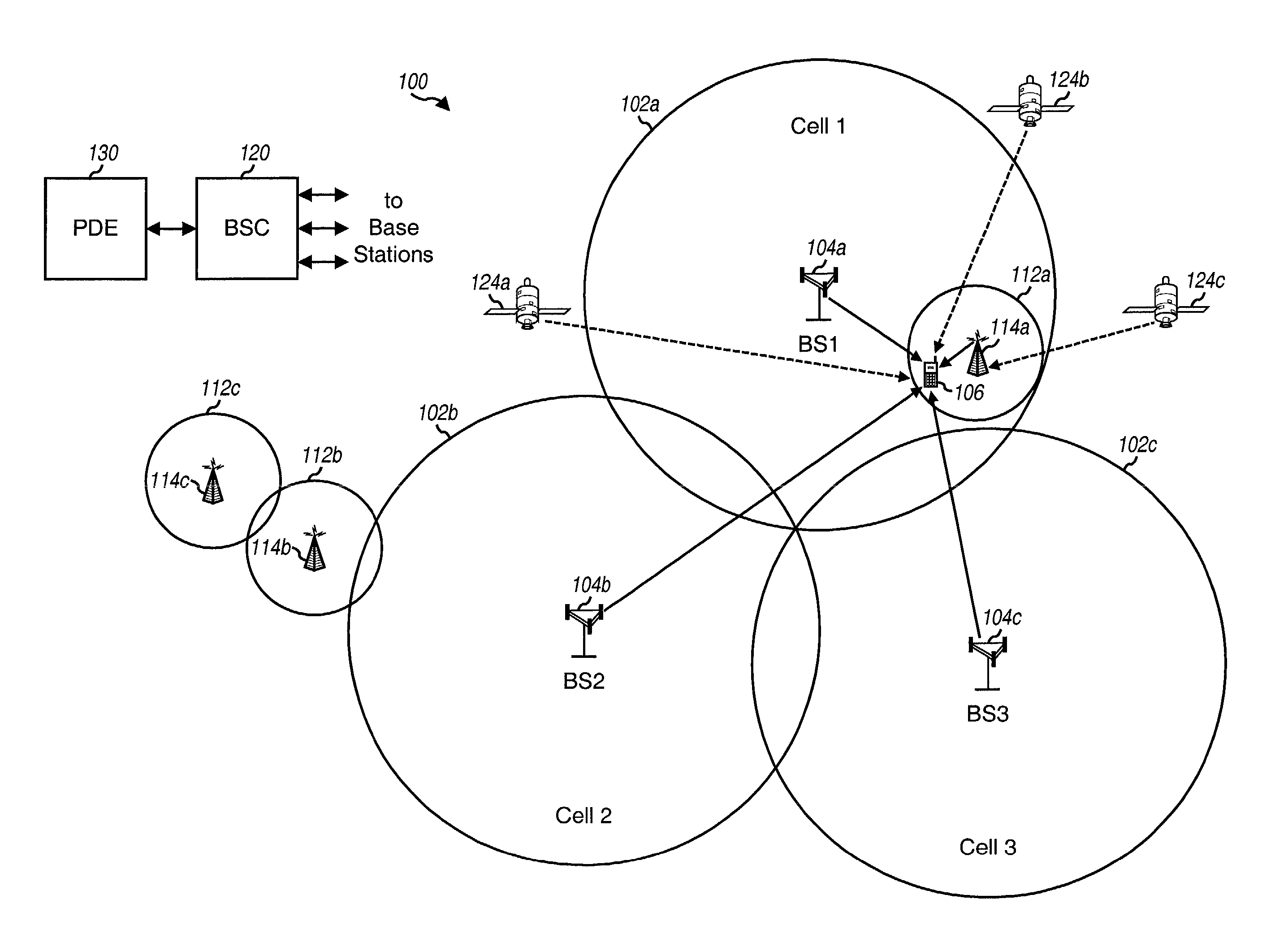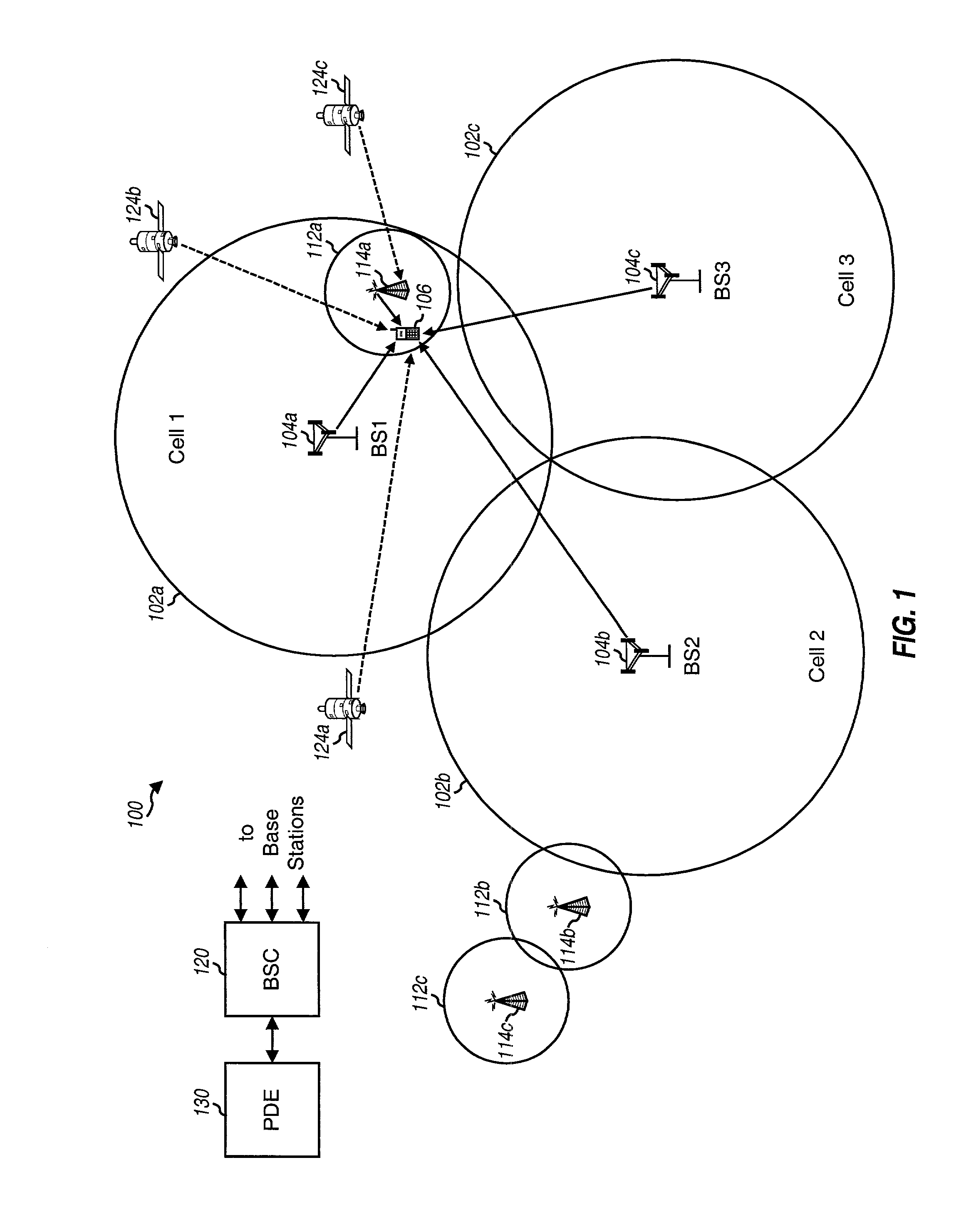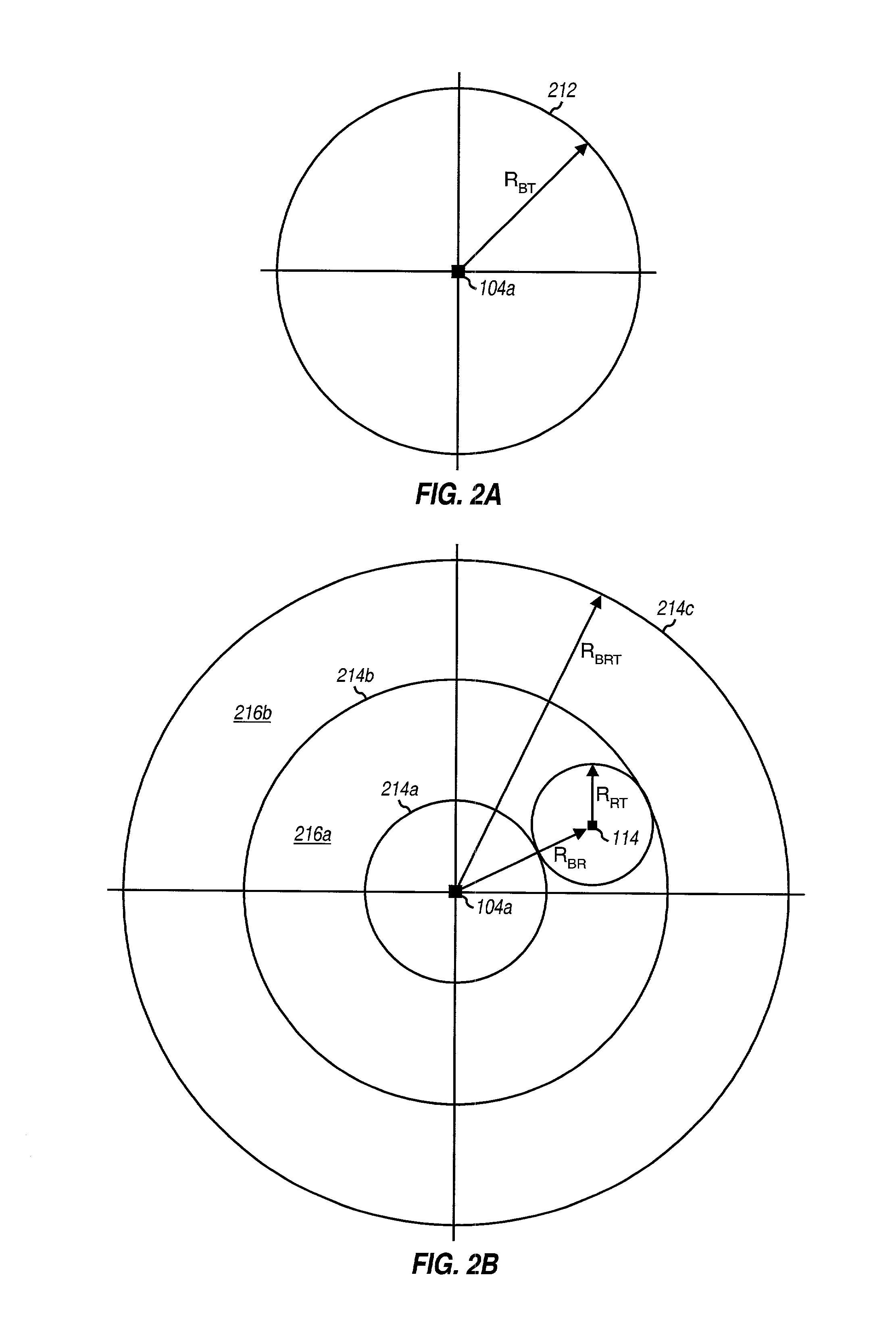Position determination in a wireless communication system with detection and compensation for repeaters
a wireless communication system and repeater technology, applied in the field of communication, can solve the problems of inability to accurately compensate for additional delays in the remote terminal's time measurement, the amount of additional delays being unknown, and the inability to accurately measure additional delays
- Summary
- Abstract
- Description
- Claims
- Application Information
AI Technical Summary
Problems solved by technology
Method used
Image
Examples
Embodiment Construction
[0032] FIG. 1 is a diagram of a wireless communication network 100 that employs repeaters and supports a number of users. Network 100 may be designed to conform to one or more commonly known CDMA standards, such as IS-95, W-CDMA, cdma2000, other standards, or a combination thereof. Network 100 includes a number of base stations 104, with each base station serving a particular coverage area 102. Only three base stations 104a through 104c are shown in FIG. 1 for simplicity. The base station and its coverage area are often collectively referred to as a cell.
[0033] One or more repeaters 114 may be employed with a particular base station 104 to provide coverage for regions within the cell that would not otherwise be covered due to fading conditions (such as region 112a shown in FIG. 1) or to extend the coverage of a network (such as regions 112b and 112c). Each repeater 114 couples directly or through another repeater to an associated base station 104 via a wireless or wireline link (e.g...
PUM
 Login to View More
Login to View More Abstract
Description
Claims
Application Information
 Login to View More
Login to View More - R&D
- Intellectual Property
- Life Sciences
- Materials
- Tech Scout
- Unparalleled Data Quality
- Higher Quality Content
- 60% Fewer Hallucinations
Browse by: Latest US Patents, China's latest patents, Technical Efficacy Thesaurus, Application Domain, Technology Topic, Popular Technical Reports.
© 2025 PatSnap. All rights reserved.Legal|Privacy policy|Modern Slavery Act Transparency Statement|Sitemap|About US| Contact US: help@patsnap.com



